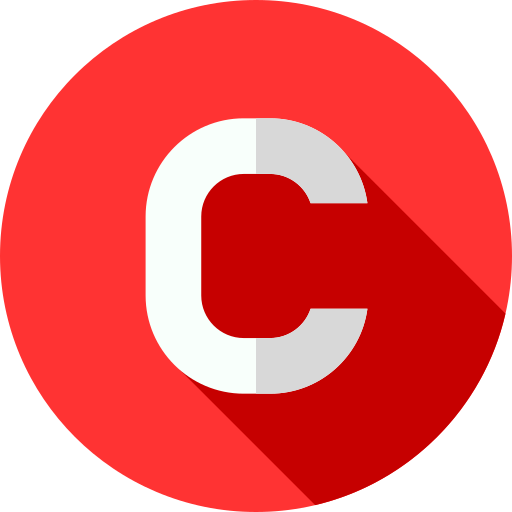However, the traditional methods of managing physical therapy practices are being revolutionized by the advent of advanced software solutions. These technological advancements are not just enhancing the efficiency of physical therapy practices but are also significantly improving patient outcomes.
Understanding Physical Therapy Software Solutions
Definition and Purpose
Physical therapy software solutions encompass a range of digital tools designed to streamline and enhance various aspects of physical therapy practices. These solutions aim to improve the efficiency of administrative tasks, enhance patient engagement, and provide better treatment outcomes.
Types of Software Used in Physical Therapy
The types of software commonly used in physical therapy include electronic health records (EHR) systems, practice management software, telehealth platforms, and exercise prescription software. Each type serves a specific purpose, from managing patient records to facilitating remote consultations and tracking patient progress.
Benefits of Implementing Software Solutions in Physical Therapy
Enhanced Patient Engagement
One of the primary benefits of physical therapy software is the enhanced engagement it offers to patients. Through user-friendly patient portals, individuals can easily access their treatment plans, schedule appointments, and communicate with their therapists. This increased accessibility leads to more active participation in their recovery process.
Improved Treatment Outcomes
By leveraging data analytics and tracking tools, therapists can monitor patient progress more accurately and adjust treatment plans in real time. This data-driven approach ensures that interventions are tailored to each patient’s unique needs, resulting in better treatment outcomes.
Streamlined Administrative Tasks
Physical therapy software solutions significantly reduce the administrative burden on healthcare providers. Automated scheduling, billing, and documentation processes save time and reduce the likelihood of errors, allowing therapists to focus more on patient care.
Key Features of Effective Physical Therapy Software
Appointment Scheduling and Management
Effective physical therapy software includes robust scheduling features that allow for easy appointment booking and management. This helps avoid scheduling conflicts and ensures that patients receive timely care.
Patient Records and Documentation
Comprehensive patient record management is crucial for any physical therapy practice. Software solutions that offer detailed documentation capabilities ensure that all patient information is accurately recorded and easily accessible.
Telehealth Capabilities
With the rise of telehealth, having software that supports virtual consultations is essential. This feature allows therapists to reach patients who may not be able to visit the clinic in person, providing greater flexibility in care delivery.
Exercise Prescription and Tracking
Physical therapy often involves prescribed exercises that patients need to perform at home. Software that includes exercise prescription and tracking features helps ensure that patients follow their regimens correctly and consistently.
Choosing the Right Physical Therapy Software
Assessing Clinic Needs
Before selecting a software solution, it’s essential to assess the specific needs of your clinic. Consider the size of your practice, the types of services you offer, and the unique challenges you face.
Comparing Different Software Options
There are numerous software options available, each with its own set of features and benefits. Compare different solutions based on their functionality, ease of use, customer support, and cost.
Evaluating User Reviews and Testimonials
Reading reviews and testimonials from other users can provide valuable insights into the effectiveness and reliability of the software. Look for feedback on user experience, customer support, and overall satisfaction.
Integration of Software Solutions in Physical Therapy Practice
Initial Setup and Training
Implementing new software requires an initial setup and training period. Ensure that the software provider offers comprehensive training resources and support to help your team get up to speed quickly.
Ongoing Support and Updates
Continuous support and regular updates are crucial for maintaining the efficiency of the software. Choose a provider that offers ongoing customer service and keeps the software up-to-date with the latest features and security measures.
Case Studies: Success Stories in Physical Therapy
Small Clinic Transformation
One small clinic experienced a significant transformation after implementing physical therapy software. The streamlined scheduling and documentation processes allowed the therapists to spend more time with patients, leading to higher patient satisfaction and better treatment outcomes.
Large Healthcare Facility Improvements
A large healthcare facility reported improved coordination among its staff and enhanced patient care after integrating a comprehensive physical therapy software solution. The ability to easily share patient information and track progress across multiple departments improved overall efficiency and patient outcomes.
Challenges in Adopting Physical Therapy Software
Resistance to Change
Change can be challenging, especially for staff accustomed to traditional methods. Overcoming resistance requires clear communication about the benefits of the new software and providing adequate training and support.
Cost Considerations
The cost of implementing new software can be a significant concern, particularly for smaller practices. It’s essential to evaluate the long-term benefits and potential cost savings that the software can provide.
Data Security Concerns
Protecting patient data is a top priority for any healthcare practice. Ensuring that the software complies with data security regulations and has robust security measures in place is crucial.
Overcoming Challenges
Strategies for Smooth Implementation
To ensure a smooth implementation, involve your team in the decision-making process, provide comprehensive training, and address any concerns promptly. Clear communication and support can help ease the transition.
Cost-Effective Solutions
Look for software solutions that offer flexible pricing plans or consider cloud-based options that may have lower upfront costs. Additionally, some software providers offer discounts or financing options for smaller practices.
Ensuring Data Privacy and Security
Choose software that complies with healthcare regulations like HIPAA and has strong data encryption and security protocols. Regularly update the software to protect against new security threats.
Future Trends in Physical Therapy Software
Artificial Intelligence and Machine Learning
AI and machine learning are set to revolutionize physical therapy by providing predictive analytics, personalized treatment plans, and automated administrative tasks.
Virtual Reality and Augmented Reality
VR and AR technologies are emerging as powerful tools for physical therapy, offering immersive treatment experiences that can enhance patient engagement and outcomes.
Integration with Wearable Technology
Wearable devices that track patient movements and vitals can integrate with physical therapy software, providing real-time data that therapists can use to adjust treatment plans and monitor progress.
The Impact on Patient-Provider Relationships
Building Stronger Connections
Technology can help build stronger patient-provider relationships by facilitating better communication and more personalized care. Patients who feel connected to their therapists are more likely to adhere to treatment plans and achieve better outcomes.
Personalizing Treatment Plans
With access to detailed patient data, therapists can create highly personalized treatment plans that address each patient’s unique needs and preferences.
Increasing Patient Satisfaction
By streamlining processes and improving communication, physical therapy software can significantly enhance patient satisfaction. Patients appreciate the convenience and efficiency that technology brings to their care experience.
Regulatory and Compliance Considerations
Understanding Healthcare Regulations
It’s essential to stay informed about healthcare regulations that affect physical therapy practices. Software solutions should comply with all relevant laws to ensure patient safety and data privacy.
Ensuring Software Compliance
Choose software that is compliant with healthcare regulations like HIPAA. This ensures that patient data is handled securely and that your practice avoids legal issues.
Keeping Up with Regulatory Changes
Healthcare regulations are continually evolving. Stay updated with changes and ensure that your software provider offers regular updates to maintain compliance.
Conclusion
Incorporating software solutions into physical therapy practices is a game-changer for both therapists and patients. These tools enhance patient engagement, improve treatment outcomes, and streamline administrative tasks, making the entire process more efficient and effective. As technology continues to advance, the potential for even greater innovations in physical therapy is immense. By embracing these changes, physical therapy practices can provide higher-quality care and achieve better patient satisfaction.
FAQs
How does physical therapy software improve patient outcomes?
Physical therapy software improves patient outcomes by enabling more accurate tracking of progress, facilitating better communication between patients and therapists, and allowing for personalized treatment plans.
What are the costs associated with physical therapy software?
The costs can vary widely depending on the software’s features and the size of the practice. Many providers offer scalable pricing plans to accommodate different budgets.
How secure is patient data in these software systems?
Reputable physical therapy software solutions comply with healthcare regulations like HIPAA and include robust security measures such as encryption and regular updates to protect patient data.
Can small clinics benefit from physical therapy software?
Yes, small clinics can greatly benefit from physical therapy software by streamlining administrative tasks, improving patient engagement, and providing more efficient care.
What are the future innovations expected in physical therapy software?
Future innovations include the integration of artificial intelligence, virtual reality, and wearable technology, all of which can enhance patient care and provide more precise treatment options


